Name Amory Lovins Role Physicist | Awards MacArthur Fellowship | |
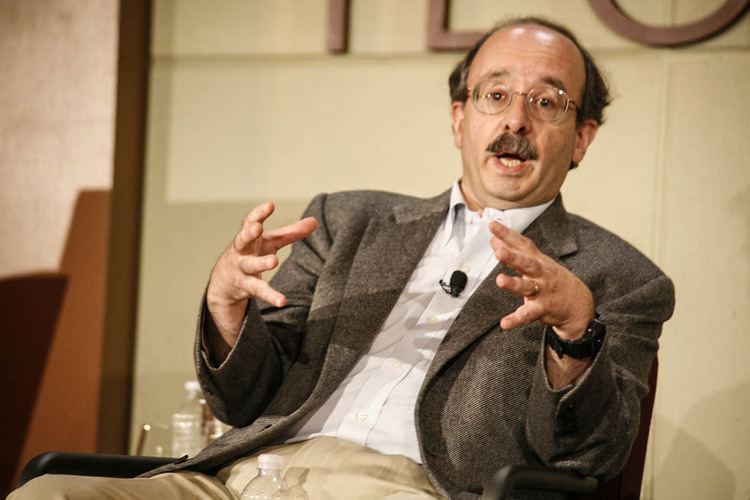 | ||
Full Name Amory Bloch Lovins Born November 13, 1947 (age 77) ( 1947-11-13 ) Washington, D.C., U.S. Occupation consultant physicist, environmental scientist Education Harvard University, Magdalen College, Oxford Books Natural Capitalism, Reinventing Fire, Winning the Oil Endgame, Small Is Profitable, A New Dynamic ‑ Effective Similar People Hunter Lovins, Paul Hawken, Ernst von Weizsacker, James Hansen, Jane Goodall | ||
John h chafee memorial lecture amory lovins chief scientist rocky mountain institute
Amory Bloch Lovins (born November 13, 1947) is an American physicist, environmental scientist, writer, and Chairman/Chief Scientist of the Rocky Mountain Institute. He has worked in the field of energy policy and related areas for four decades. He was named by Time magazine one of the World's 100 most influential people in 2009.
Contents
- John h chafee memorial lecture amory lovins chief scientist rocky mountain institute
- Amory lovins co founder chief scientist chair emeritus rocky mountain institute
- Early life
- Friends of the Earth
- Rocky Mountain Institute
- Soft energy paths
- Nuclear power limitations
- Negawatt revolution
- Hypercar
- Citizen participation
- Awards
- Personal life
- Books
- References

Lovins worked professionally as an environmentalist in the 1970s and since then as an analyst of a "soft energy path" for the United States and other nations. He has promoted energy efficiency, the use of renewable energy sources, and the generation of energy at or near the site where the energy is actually used. Lovins has also advocated a "negawatt revolution" arguing that utility customers don’t want kilowatt-hours of electricity; they want energy services. In the 1990s, his work with Rocky Mountain Institute included the design of an ultra-efficient automobile, the Hypercar.
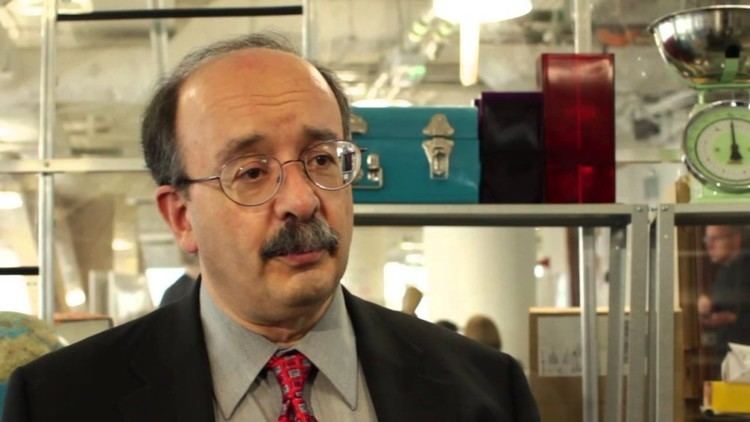
Lovins does not see his energy ideas as green or left-wing, and he is an advocate of private enterprise and free market economics. He notes that Rupert Murdoch has made News Corporation carbon-neutral, with savings of millions of dollars. But, says Lovins, large institutions are becoming more "gridlocked and moribund", and he supports the rise of "citizen organizations" around the world.
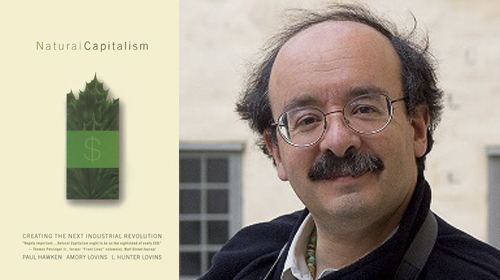
Lovins has received ten honorary doctorates and won many awards. He has provided expert testimony in eight countries, briefed 19 heads of state, and published 31 books. These books include Reinventing Fire, Winning the Oil Endgame, Small is Profitable, Brittle Power, and Natural Capitalism.
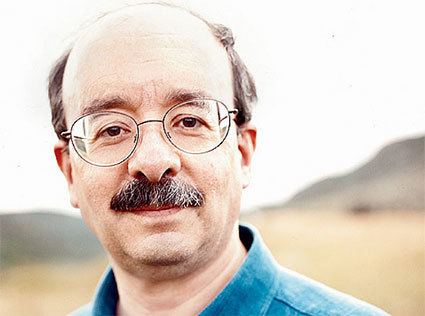
Amory lovins co founder chief scientist chair emeritus rocky mountain institute
Early life
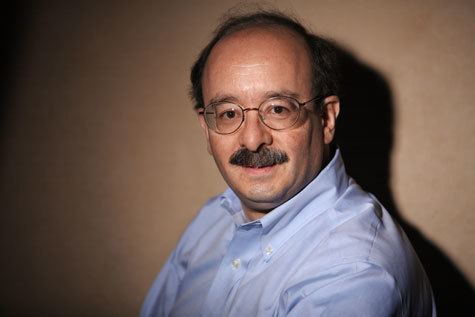
Born in Washington, DC, Lovins spent much of his youth in Silver Spring, Maryland, and in Amherst, Massachusetts. In 1964, Lovins entered Harvard College. After two years there, he transferred in 1967 to Magdalen College, Oxford University, England, where he studied physics and other topics. In 1969 he became a Junior Research Fellow at Merton College, Oxford, where he had a temporary Oxford master of arts (M.A.) status as a result of becoming a university don. He did not graduate because the University would not allow him to pursue a doctorate in energy, as it was two years before the 1973 oil embargo and energy was not yet considered an academic subject. Lovins resigned his Fellowship and moved to London to pursue his energy work. He moved back to the U.S. in 1981 and settled in western Colorado in 1982.
Friends of the Earth
Each summer from about 1965 to 1981, Lovins guided mountaineering trips and photographed the White Mountains of New Hampshire, contributing photographs to At Home in the Wild: New England's White Mountains. In 1971 he wrote about the endangered Snowdonia National Park in the book, Eryri, the Mountains of Longing, commissioned by David Brower, president of Friends of the Earth. Lovins spent about a decade as British Representative for Friends of the Earth.
During the early seventies, Lovins became interested in the area of resource policy, especially energy policy. The 1973 energy crisis helped create an audience for his writing and an essay originally penned as a U.N. paper grew into his first book concerned with energy, World Energy Strategies (1973). His next book was Non-Nuclear Futures: The Case for an Ethical Energy Strategy (1975), co-authored with John H. Price. Lovins published a 10,000-word essay "Energy Strategy: The Road Not Taken?" in Foreign Affairs, in October 1976. Its contents were the subject of many seminars at government departments, universities, energy agencies, and nuclear energy research centers, during 1975–1977. The article was expanded and republished as Soft Energy Paths: Toward a Durable Peace in 1977.
Rocky Mountain Institute
By 1978 Lovins had published six books, consulted widely, and was active in energy affairs in some 15 countries. In 1982, he and Hunter Lovins founded Rocky Mountain Institute, based in Snowmass, Colorado. Together with a group of colleagues, the Lovinses fostered efficient resource use and sustainable development.
Lovins has briefed 19 heads of state, provided expert testimony in eight countries, and published 29 books and several hundred papers. His clients have included many Fortune 500 companies, major real-estate developers, and utilities. Public-sector clients have included the OECD, UN, Resources for the Future, many national governments, and 13 US states. Lovins served in 1980–81 on the U.S. Department of Energy's Energy Research Advisory Board, and in 1999–2001 and 2006-08 on Defense Science Board task forces on military energy efficiency and strategy. His visiting academic chairs most recently included a visiting professorship in Stanford University's School of Engineering.
Since 1982, RMI has grown into a broad-based "think-and-do tank" with more than 85 staff and an annual budget of some $13 million. RMI has spun off five for-profit companies.
Soft energy paths
Amory Lovins came to prominence in 1976 when he published an article in Foreign Affairs called "Energy Strategy: The Road Not Taken?" Lovins argued that the United States had arrived at an important crossroads and could take one of two paths. The first, supported by U.S. policy, promised a future of steadily increasing reliance on fossil fuels and nuclear fission, and had serious environmental risks. The alternative, which Lovins called "the soft path," favored "benign" sources of renewable energy like wind power and solar power, along with a heightened commitment to energy conservation and energy efficiency. In October 1977, The Atlantic ran a cover story on Lovins' ideas.
Amory Lovins advocates "soft energy paths" involving efficient energy use, diverse and renewable energy sources, and special reliance on "soft energy technologies". Soft energy technologies are those based on solar, wind, biofuels, geothermal, etc. which are matched in scale and quality to their task. Residential solar energy technologies are prime examples of soft energy technologies and rapid deployment of simple, energy conserving, residential solar energy technologies is fundamental to a soft energy strategy.
Lovins has described the "hard energy path" as involving inefficient energy use and centralized, non-renewable energy sources such as fossil fuels. One of Lovins' main concerns was the danger of committing to nuclear energy to meet a society's energy needs, due chiefly to what he considered its poor economics and high risk of fostering nuclear weapons proliferation.
Lovins argued that besides environmental benefits, global political stresses might be reduced by Western nations committing to the soft energy path. He believes soft path impacts are more "gentle, pleasant and manageable" than hard path impacts. These impacts range from the individual and household level to those affecting the very fabric of society at the national and international level.
Lovins on the Soft Path is an award-winning documentary film made by Amory and Hunter Lovins. It received many prizes: "Best Science and Technology Film, San Francisco International Film Festival, 1983; Blue Ribbon, American Film Festival, 1982; Best of the Festival, Environmental Education Film Festival, 1982; Best Energy Film, International Environmental Film Festival, 1982; and Chris Bronze Plaque, Columbus International Film Festival, 1982."
Nuclear power limitations
Lovins says that nuclear power plants are intermittent in that they will sometimes fail unexpectedly, often for long periods of time. For example, in the United States, 132 nuclear plants were built, and 21% were permanently and prematurely closed due to reliability or cost problems, while another 27% have at least once completely failed for a year or more. The remaining U.S. nuclear plants produce approximately 90% of their full-time full-load potential, but even they must shut down (on average) for 39 days every 17 months for scheduled refueling and maintenance. To cope with such intermittence by nuclear (and centralized fossil-fuelled) power plants, utilities install a "reserve margin" of roughly 15% extra capacity spinning ready for instant use.
Nuclear plants have an additional disadvantage; for safety, they must instantly shut down in a power failure, but for nuclear-physics reasons, they can’t be restarted quickly. For example, during the Northeast Blackout of 2003, nine operating U.S. nuclear units had to shut down and were later restarted. During the first three days, while they were most needed, their output was less than 3% of normal. After twelve days of restart, their average capacity loss had exceeded 50 percent.
Lovins general assessment of nuclear power is that "Nuclear power is the only energy source where mishap or malice can kill so many people so far away; the only one whose ingredients can help make and hide nuclear bombs; the only climate solution that substitutes proliferation, accident, and high-level radioactive waste dangers. Indeed, nuclear plants are so slow and costly to build that they reduce and retard climate protection". With respect to the 2011 Japanese nuclear accidents, Lovins has said: "An earthquake-and-tsunami zone crowded with 127 million people is an unwise place for 54 reactors".
In terms of the UK, Amory Lovins commented in 2014 that:
Britain's plan for a fleet of new nuclear power stations is … unbelievable … It is economically daft. The guaranteed price [being offered to French state company EDF] is over seven times the unsubsidised price of new wind in the US, four or five times the unsubsidised price of new solar power in the US. Nuclear prices only go up. Renewable energy prices come down. There is absolutely no business case for nuclear. The British policy has nothing to do with economic or any other rational base for decision making.
Negawatt revolution
A negawatt is a unit in watts of energy saved. It is basically the opposite of a watt. Amory Lovins has advocated a "negawatt revolution", arguing that utility customers don’t want kilowatt-hours of electricity; they want energy services such as hot showers, cold beer, lit rooms, and spinning shafts, which can come more cheaply if electricity is used more efficiently.
According to Lovins, energy efficiency represents a profitable global market and American companies have at their disposal the technical innovations to lead the way. Not only should they "upgrade their plants and office buildings, but they should encourage the formation of negawatt markets". Lovins sees negawatt markets as a win-win solution to many environmental problems. Because it is "now generally cheaper to save fuel than to burn it, global warming, acid rain, and urban smog can be reduced not at a cost but at a profit".
Lovins explains that many companies are already enjoying the financial and other rewards that come from saving electricity. Yet progress in converting to electricity saving technologies has been slowed by the indifference or outright opposition of some utilities. A second obstacle to efficiency is that many electricity-using devices are purchased by people who won’t be paying their running costs and thus have little incentive to consider efficiency. Lovins also believes that many customers "don't know what the best efficiency buys are, where to get them, or how to shop for them".
Hypercar
In 1994, Amory Lovins developed the design concept of the Hypercar. This vehicle would have ultra-light construction with an aerodynamic body using advanced composite materials, low-drag design, and hybrid drive. Designers of the Hypercar claim that it would achieve a three- to fivefold improvement in fuel economy, equal or better performance, safety, amenity, and affordability, compared with today's cars.
In 1999, RMI took this process a step further by launching a for-profit venture, Hypercar Inc. This independent company, in which RMI has a minority interest, is now taking the lead in advancing key areas of Hypercar research and development. In 2004, Hypercar Inc. changed its name to Fiberforge to better reflect the company's new goal of lowering the cost of high-volume advanced-composite structures by leveraging the patents of David F. Taggart, one of the founders of Hypercar, Inc.
Lovins says the commercialisation of the Hypercar began in 2014, with the production of the all-carbon electric BMW i3 family and the 313 miles per gallon Volkswagen XL1.
Citizen participation
Lovins does not see his energy ideas as green or left-wing, and he is an advocate of private enterprise and free market economics. He notes that Rupert Murdoch has made News Corporation carbon-neutral, with savings of millions of dollars. But, says Lovins, large institutions are becoming more "gridlocked and moribund", and he supports the rise of "citizen organizations" around the world.
Awards
Amory Lovins has received ten honorary doctorates and was elected a Fellow of the American Association for the Advancement of Science in 1984, of the World Academy of Art and Science in 1988, and of the World Business Academy in 2001. He has received the Right Livelihood Award, the Blue Planet Prize, Volvo Environment Prize, the 4th Annual Heinz Award in the Environment in 1998, and the National Design (Design Mind), Jean Meyer, and Lindbergh Awards.
Lovins is also the recipient of the Time Hero for the Planet awards, the Benjamin Franklin and Happold Medals, and the Shingo, Nissan, Mitchell, and Onassis Prizes. He has also received a MacArthur Fellowship and is an honorary member of the American Institute of Architects (AIA), a Foreign Member of the Royal Swedish Academy of Engineering Sciences, and an Honorary Senior Fellow of the Design Futures Council. Furthermore, he is on the Advisory Board of the Holcim Foundation.
In 2009, Time magazine named Lovins as one of the world's 100 most influential people.
On 17 March 2016, Lovins received the Bundesverdienstkreuz 1. Klasse (Officer's Cross of the Order of Merit) from the Federal Republic of Germany for intellectually underpinning Germany's Energiewende, most notably with his concept of "soft energy" and how that promotes peace and prosperity.
Personal life
In 1979 Amory Lovins married L. Hunter Sheldon, a lawyer, forester, and social scientist. Hunter received her undergraduate degree in sociology and political studies from Pitzer College, and her J.D. from Loyola University's School of Law. They separated in 1989 and divorced in 1999. In 2007, he married Judy Hill Lovins, a fine-art landscape photographer.
Lovins is the brother of Julie Beth Lovins, a computational linguist who wrote the first stemming algorithm for word matching.
Books
This is a list of books which are authored or co-authored by Amory B. Lovins, or which include a foreword by him:
Non-English
